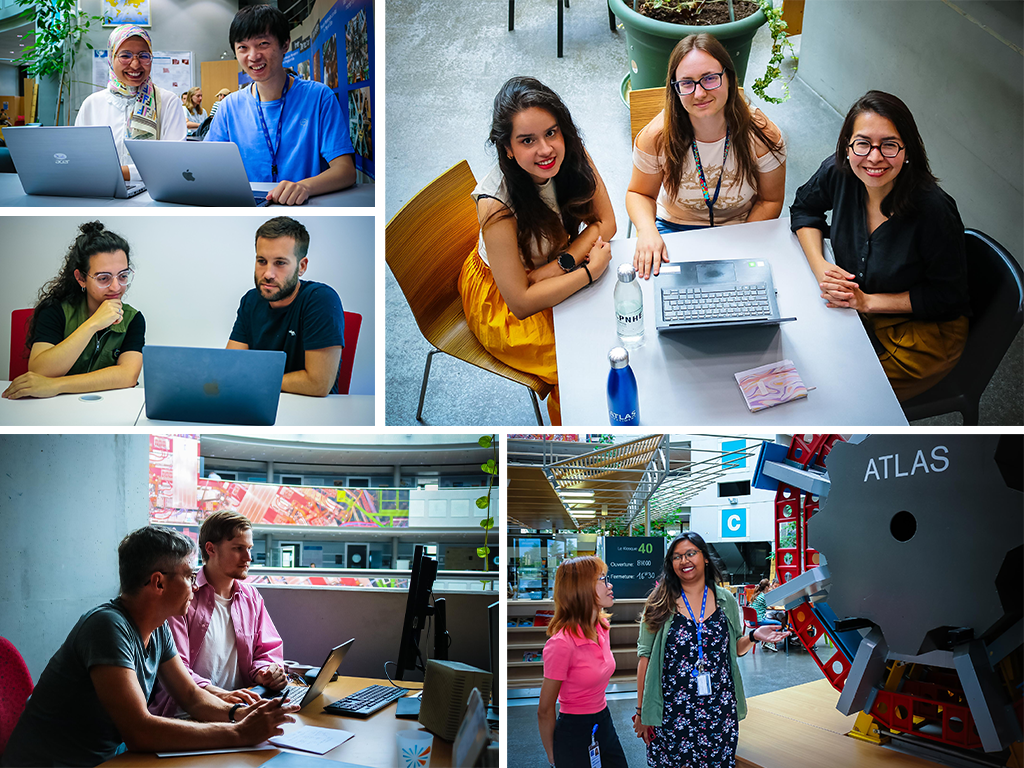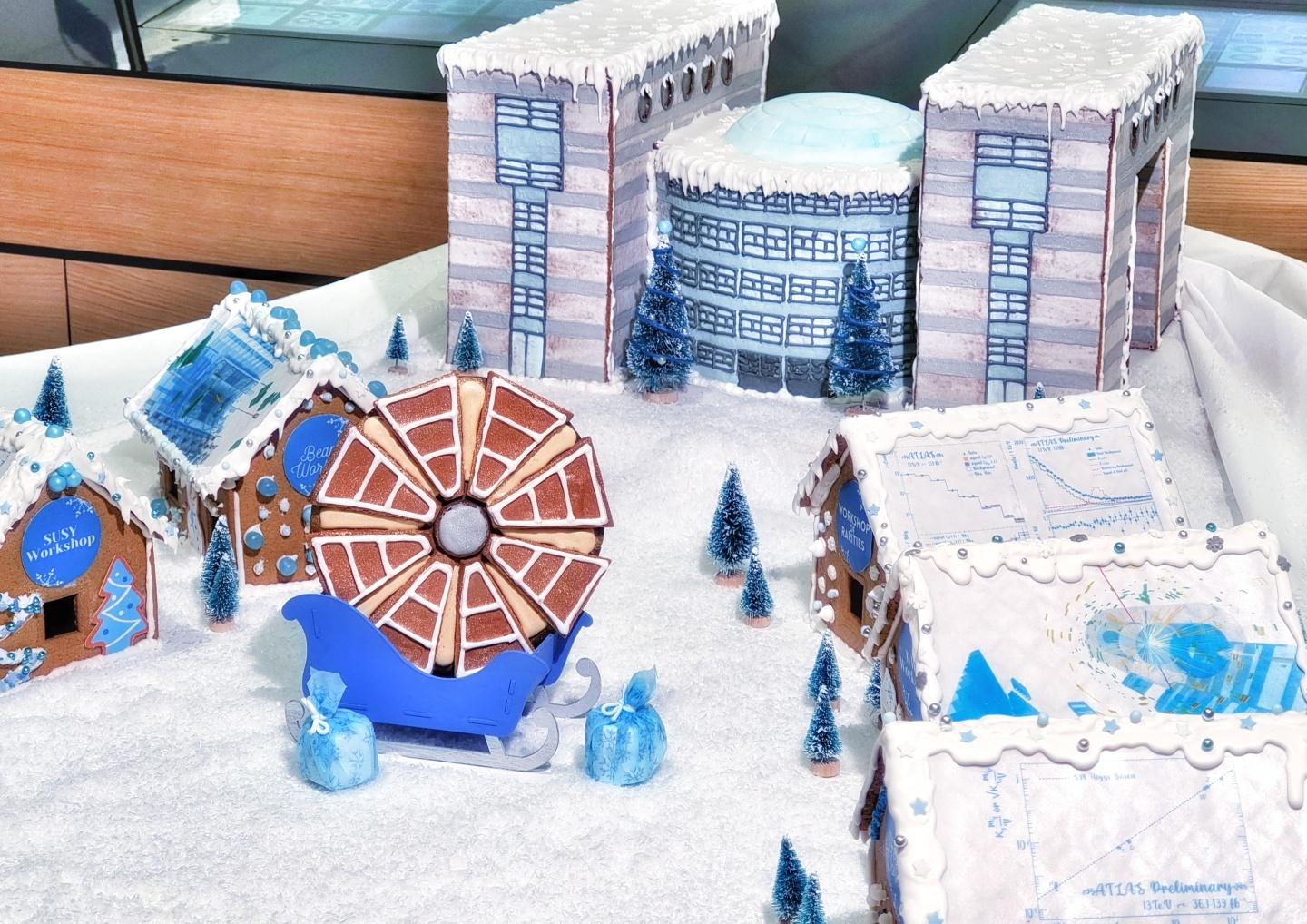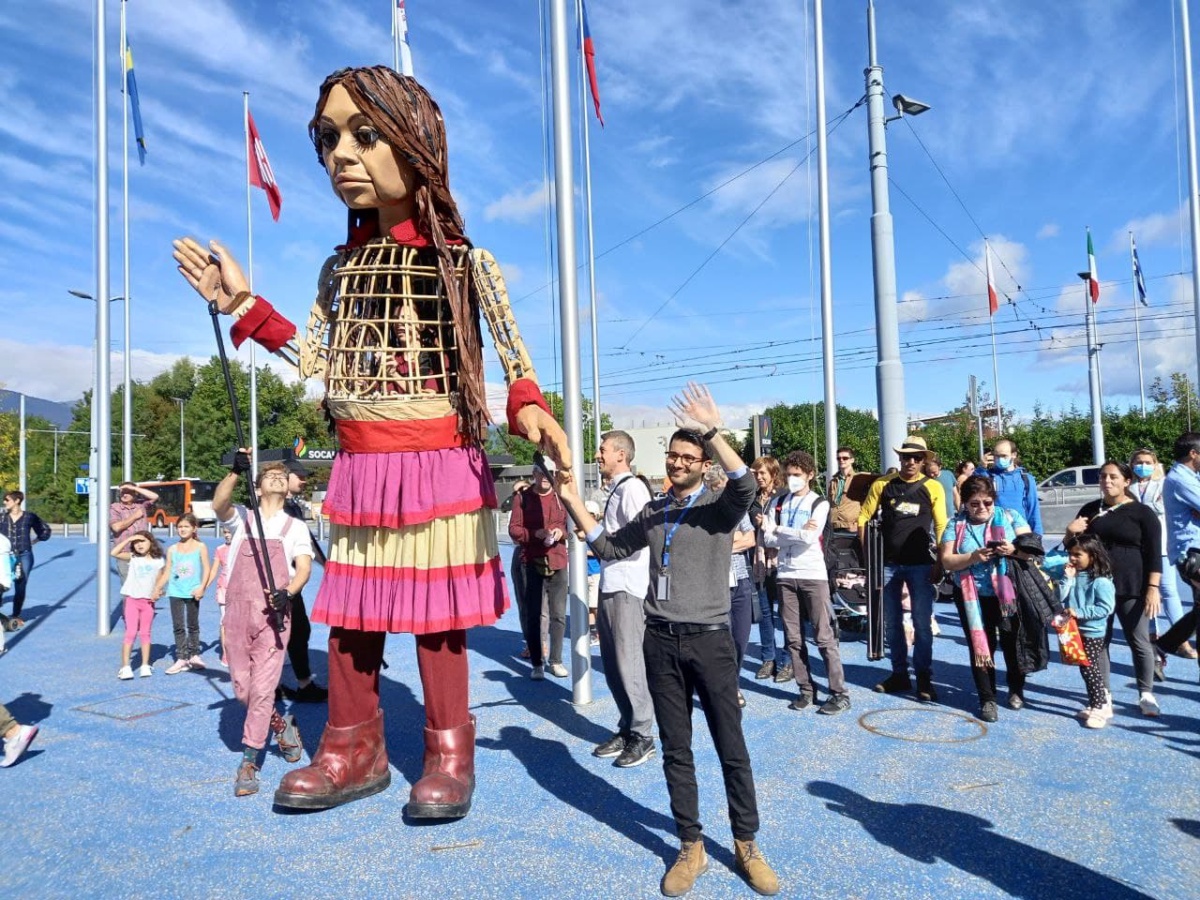Projecting pARTicles in Cuba
22 June 2015 | By
From Ars Electronica-style festivals to artists in residence programmes at scientific organisations, "art meets science" is a term that just keeps on trending. ATLAS visiting artist Agnes Chavez has taken a fresh look at the merging of the disciplines, adding a new one to the mix: "Art meets Science meets Education".

Agnes visited the Atlas Outreach team in March, where she spent two weeks visiting CERN's experiments and speaking with theorists and experimentalists. "I've always had an interest in particle physics, reading every layman’s book I could get my hands on," says Agnes. "Being able to come to CERN and meet with ATLAS physicists for one-on-one conversations. It was extraordinary. Not only has my knowledge of particle physics grown, I've also developed a new understand of the scientific process."
During her time at CERN, Agnes met with ATLAS physicist Luis Flores Castillo (The Chinese University of Hong Kong). "We had a very nice, extended exchange," says Luis. "She had been doing science-art workshops with students, and I have been doing science outreach for a while, so our collaboration seemed like the natural next step."
"Nothing compares to direct interaction with a physicist - be it through webcasts or in person," says Agnes. "But out of these workshops, I plan to create online Art/Sci instruction modules to make the content accessible to science teachers and students.”
Their shared interest in improving science education - especially in developing countries - led to the first Projecting pARTicles workshop at the Havana Biennial 2015 in Cuba. In this event, high school students participated in a series of led-discussions about particle physics followed by a tutorial led by Tagtool artist and app designer Markus Dorninger. With their new knowledge, they created "physics-inspired projection artwork" that was displayed on the streets of Havana.

"We engaged their imagination by starting with one big, central question: 'What is space?' From that, more focused discussions followed, on the big bang theory, the discovery of the Higgs boson, dark matter and Supersymmetry," says Agnes. "The students were naturals with the Tagtool app and created fantastic work."
"It went really well," adds Luis. "The students were extremely engaged in our conversations and the art they created from it was really well received. We had a lot of people stopping to watch the projections, asking questions about their inspiration."
Following the successful completion of the Projecting pARTicles workshop in Cuba, Agnes is now looking to expand the programme to more schools around the world. "I'm looking forward to being part of further workshops," says Luis. "We are hoping to visit the Papalote Children's Museum in Mexico - my home country - for the next Projecting pARTicles workshop. We'd make use of the museum's digital dome, which would be the perfect venue for the artwork."
Through her organization, the STEMarts Lab, Agnes is also working to create an online presence for the project, creating learning materials for educators who want to incorporate art and particle physics into their lesson plans. "Nothing compares to direct interaction with a physicist - be it through webcasts or in person," says Agnes. "But out of these workshops, I plan to create online Art/Sci instruction modules to make the content accessible to science teachers and students.”
For more about the STEMarts Lab and the Projecting pARTicles workshop in Cuba, follow Agnes' blog and visit stemarts.com.



